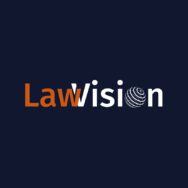It’s budget season for law firms. Budgeting for marketing dollars, even in good times, can be an inexact science based on unclear assumptions. Given global uncertainty, this year will be particularly challenging. Knowing where to shift dollars saved from canceled in-person events and travel will be delicate. Convincing firm leadership to divert those funds to other more appropriate business development strategies may be an uphill battle when the firm is hungry to reduce overhead.
Additionally, as I coach individual lawyers on their business development efforts, I find many are still unclear about how to engage with clients and prospects meaningfully amidst the uncertainty. Some are tempted to sit back and wait until the crisis is resolved and then return to traditional methods for building clientele.
Consider the story of Paul and Floy Heck as reported by David McRaney, author of “You Are Not So Smart,”
The Hecks were on vacation. It had been a long ride, but their Pan Am Boeing 747 had finally touched down on Tenerife, in the Canary Islands. People on the plane made ready to disembark while the pilot taxied to the terminal. Like the others, Paul and Floy gathered their things and waited to unbuckle their seat belts when instructed. As they gazed out the window at an uncharacteristic fog settling in on the runway, a sudden blast like the sound of two colliding freight trains tore through the cabin, followed by a flash of intense heat and pressure. The crew of KLM flight 4805, unaware, in the thick fog, of the presence of the PanAm flight, had attempted to take off right in the PanAm aircraft’s path. Upon seeing the other plane, the KLM pilot tried to pull up but couldn’t get his plane in the air. It smashed into the PanAm flight at 160 miles per hour and sheared off its top. Instantly, the PanAm aircraft caught fire, and the cabin filled with smoke. Paul Heck unbuckled his seat belt and turned to his wife, Floy. She sat there, motionless. She later reported, “I went into a kind of a silent world. Stunned and frozen in my seat …I was frozen stiff with shock.” Paul yelled, “Honey, get your seat belt off. Come on!” As they left, he looked for their good friends and traveling companions, Lorraine and Karl, but they just sat in their seats looking stunned. Floy remembers looking back right before jumping out of the plane. She saw her friend Lorraine still seated, hands folded in her lap, eyes glassed over. Lorraine did not survive.
John Leach, Military Survival, Evasion, Resistance and Extraction Psychologist and former Director of Studies for cognitive psychology at the University of Lancaster, studies how we freeze under stress. He says only 15 percent of people react to a disaster the way we see it portrayed in movies (either calmly, working the problem, or completely freaking out). Seventy-five percent of us react differently; we freeze. Floy’s friend Lorraine was not alone. Only 61 of the 496 passengers survived the impact and resulting fires in Tenerife that night. Many just sat in their seats as if they were waiting to be escorted out by a flight attendant.
According to McRaney, for many of us, our analysis of any situation begins with the context of what we see as normal. We tend to interpret strange and alarming situations as if they were just part of business as usual. Psychologists refer to this phenomenon as Normalcy Bias, a cognitive bias that leads people to disbelieve or minimize threat warnings. Normalcy Bias can manifest itself whether you have advance warning of a disaster or are immediately blindsided by a life and death event. It explains why people don’t run from tornadoes, refuse to evacuate during hurricanes, and sneak back into closed campgrounds even though a nearby volcano is about to blow. Normalcy bias causes us to stall during a crisis and pretend everything will continue to be the same predictable, rational, calm world we know. We refuse to believe that the terrible things happening around us will include us even though all the evidence is to the contrary.
Organizations can suffer from Normalcy Bias as well. Take the story of Post cereal in the late nineteen twenties. When the depression hit, they did the equivalent of sitting on the plane waiting for someone to escort them out. They kept going as if nothing had changed. In fact, they pulled back on critical advertising budgets for their new products. On the other hand, their competitor, the Kellogg company, did the equivalent of grabbing your wife and getting the hell off the plane. Kellogg doubled its budget for advertising, found new mediums and new audiences in radio advertising, and heavily promoted its new brands. The result? By the mid-thirties, “Snap, Crackle, and Pop” was a well-known phrase, and Kellogg’s profits had risen by close to thirty percent. Today Kellogg is still the industry leader in prepared breakfast cereals.
Kellogg is just one example of how increased marketing efforts in the face of economic uncertainty has paid off. During the great depression, Proctor & Gamble, Chevrolet, and Camel cigarettes all benefitted from significant increases in marketing and advertising efforts.
How about you? As you wade through how to build your own business during a pandemic, have portions of Normalcy Bias crept into your thinking? Have you told yourself that you will wait to re-connect when you can safely socialize with prospects and clients the way you did last year? Have you held off asking for an audience or connecting with a contact because phone calls and zoom meetings seem too awkward? Have you assumed that your clients are too busy or too cash-poor to use your services? Are you trying to build business the same way you were before the global pandemic? If so, you may be suffering from a version of Normalcy Bias. Allow me to be your seatmate on the burning plane for a moment and invite you to crawl out on the wing and jump to safety with me. What we are experiencing is not normal. It is not even part of a regular recessionary cycle. It is a one-time event that is changing the way the world does business. Yes, some things will come back; we’ll eventually lunch, golf, and drink with our friends again, but so many other things are changing. Sitting obediently strapped to your seat in 34D will not change that. Look around and find your exit.
Where should you start? The person sitting right next to you in 34E, of course: the client. There she is. Ask yourself what you think she needs? Perhaps she has a case of Normalcy Bias herself. Can you shock her back into reality by pointing out obstacles to avoid, creating solutions to heretofore unseen challenges? Can you think of ways to reach her and others who may be suffering? Do you have superior knowledge or tools compelling enough that she’d take a meeting? Is your firm building a marketing budget that will help her understand the firm’s capabilities and interest in her plight?
This is not a normal moment. It is not the time to act normal. You need to stand up and find the exit. You need to ask yourself, are you Post or are you Kellogg? Are you going to put your head in the sand and wait it out, or are you going to look at the reality of the new world and strike? If ever there were a time for a law firm or an individual lawyer to boost business development efforts, this is it. Market share is up for grabs. The clients of those still in their seats need help getting out of theirs.
Stand up. Pick them up and help them off the plane.
Posted In



